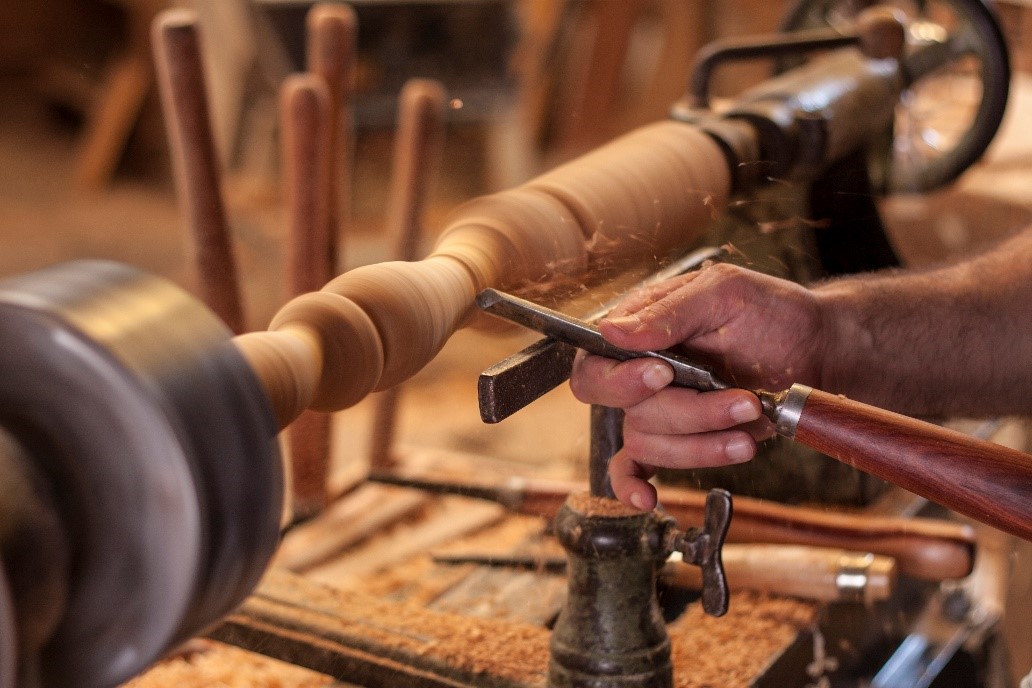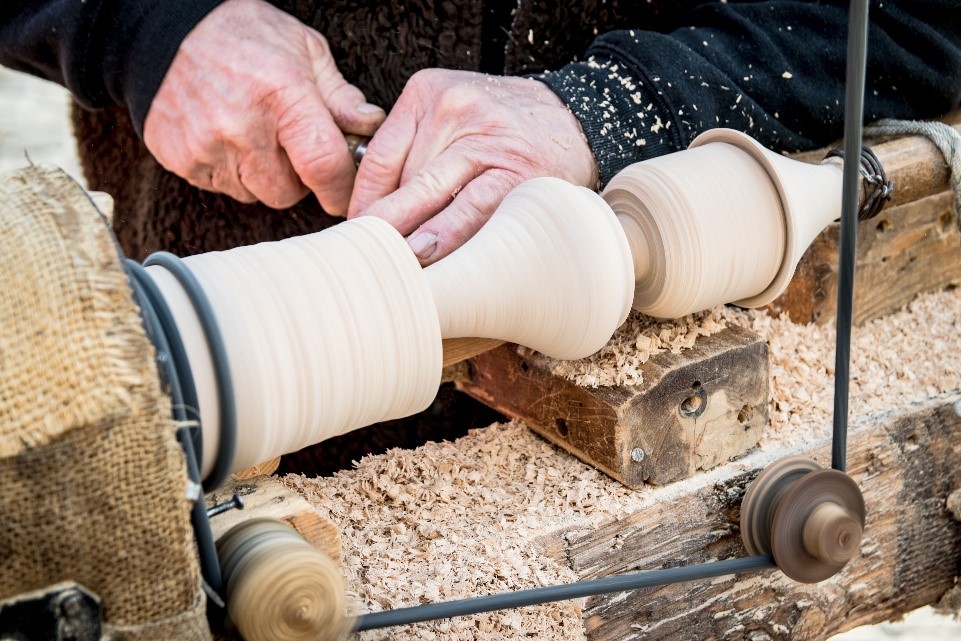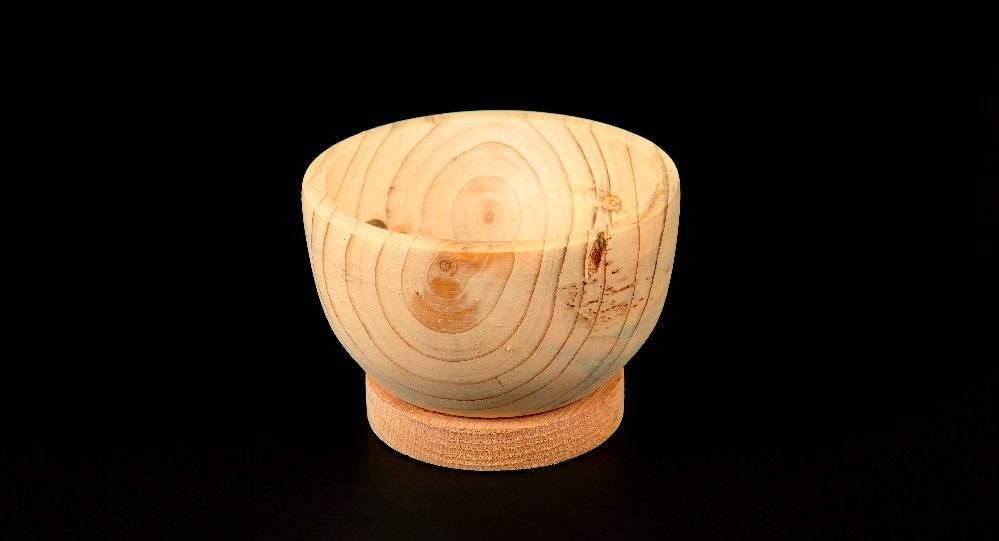The history and techniques of woodturning
Contents |
Introduction
The various natures of wood define the technique of woodturning. The grain of the wood will change the orientation relative to the axis and the types of tools and techniques needed. However, the grain is always perpendicular to the direction of rotation.
There are several other factors which will affect woodturning, such as moisture and the character of the wood. So, what is woodturning, where did it originate, and what are the techniques available?
What is woodturning?
Woodturning is the process of using tools to cut and mould shapes onto wood while it turns on an axis of rotation. It usually uses a tool called a wood lathe which performs operations such as sanding, cutting, knurling, facing, turning, drilling and deformation. The worker operating the machine is known as a turner, and the craft is traditionally referred to as turnery.
Through woodturning, it is possible to make items such as candlesticks, lamps, rolling pins, egg cups, chess pieces, or any wooden piece moulded into a form. Even though industrial production has replaced much of the production of these items, the wood lathe and turnery is still relevant in the bespoke making of items. Whether this is a hobby or means of employment, woodturning can save time and money, it is also a fun and satisfying art.
The history of woodturning
What we know about the historic craft of woodturning is limited because of the nature of wood, with its fibres prone to rotting. Early lathe workers would use their bare feet to hold the cutting tools in place while using their hands to power the lathe.
Our first knowledge of bowls and cups being made through woodturning date from between 500 and 1500 AD. This comes from excavated shipwrecks such as the Oseburg burial ship and the Mary Rose.
As early as the 1500s, a separate fly wheel would power the lathe, but as time progressed the machine adapted to use power sources such as water, electricity and steam.
In the 19th and early 20th century, English woodturners would work in turning shops, usually using a master and apprentice system. In the US, woodturning was also a part of the school system curriculum. This included learning how to build furniture and tool management skills – some of which can still be seen in schools today.
Techniques of woodturning
With an understanding of some basic woodturning techniques and the correct equipment, it is possible to produce anything from traditional wooden items to avant-garde creations.
- Spindle turning: This is the most common and basic technique in wood turning, and is the simple process of turning the spindle once mounting the wood between the head and tailstock of the lathe. There are several types of spindles that can be used, chosen according to individual applications.
- Decorative spindle turning: This differs to normal spindle turning as it includes roughing, sizing and smoothing stocks of wood. This process needs a more elaborate form of cutting which can make more intricate grooves as well as curves and shapes.
- Segmented turning: This turning method involved several pieces of wood taken together to form a wood blank. Every segment of the wood is glued together before turning. The segmented turning process can create some of the most exciting formations and patterns.
- Faceplate turning: This single fluid technique differs to spindle turning and allows much more freedom. A faceplate is a circular metal plate which fixes onto the end of the lathe and can help to hold and save time.
- Bowl turning: An experienced turner can use a bowl gouge to get the required result. This technique requires a gouge bevel held on a wood blank and transformed into a bowl shape. With the help of scraping tools, it is possible to create the perfect bowl.
- Alternative techniques include; eccentric turning, therming, green turning, ornamental and more.
--G&S Specialist Timber 15:35, 06 Sep 2017 (BST)
Related articles on Designing Buildings Wiki
- 11 things you didn't know about wood.
- Birch wood.
- Carpentry.
- Cedar.
- Chip carving
- Engineered bamboo.
- European Union Timber Regulation.
- Forest Stewardship Council.
- Glulam.
- Laminated veneer lumber LVL.
- Lime wood.
- Oak wood properties.
- Padauk wood.
- Pine wood.
- Plywood.
- Programme for the Endorsement of Forest Certification.
- Properties of mahogany.
- The Art of Pyrography.
- Timber.
- Best Woods for Wood Carving
- Physical Properties of Wood
- The Differences Between Hardwood and Softwood
Featured articles and news
Latest Build UK Building Safety Regime explainer published
Key elements in one short, now updated document.
UKGBC launch the UK Climate Resilience Roadmap
First guidance of its kind on direct climate impacts for the built environment and how it can adapt.
CLC Health, Safety and Wellbeing Strategy 2025
Launched by the Minister for Industry to look at fatalities on site, improving mental health and other issues.
One of the most impressive Victorian architects. Book review.
Common Assessment Standard now with building safety
New CAS update now includes mandatory building safety questions.
RTPI leader to become new CIOB Chief Executive Officer
Dr Victoria Hills MRTPI, FICE to take over after Caroline Gumble’s departure.
Social and affordable housing, a long term plan for delivery
The “Delivering a Decade of Renewal for Social and Affordable Housing” strategy sets out future path.
A change to adoptive architecture
Effects of global weather warming on architectural detailing, material choice and human interaction.
The proposed publicly owned and backed subsidiary of Homes England, to facilitate new homes.
How big is the problem and what can we do to mitigate the effects?
Overheating guidance and tools for building designers
A number of cool guides to help with the heat.
The UK's Modern Industrial Strategy: A 10 year plan
Previous consultation criticism, current key elements and general support with some persisting reservations.
Building Safety Regulator reforms
New roles, new staff and a new fast track service pave the way for a single construction regulator.
Architectural Technologist CPDs and Communications
CIAT CPD… and how you can do it!
Cooling centres and cool spaces
Managing extreme heat in cities by directing the public to places for heat stress relief and water sources.
Winter gardens: A brief history and warm variations
Extending the season with glass in different forms and terms.
Restoring Great Yarmouth's Winter Gardens
Transforming one of the least sustainable constructions imaginable.

























